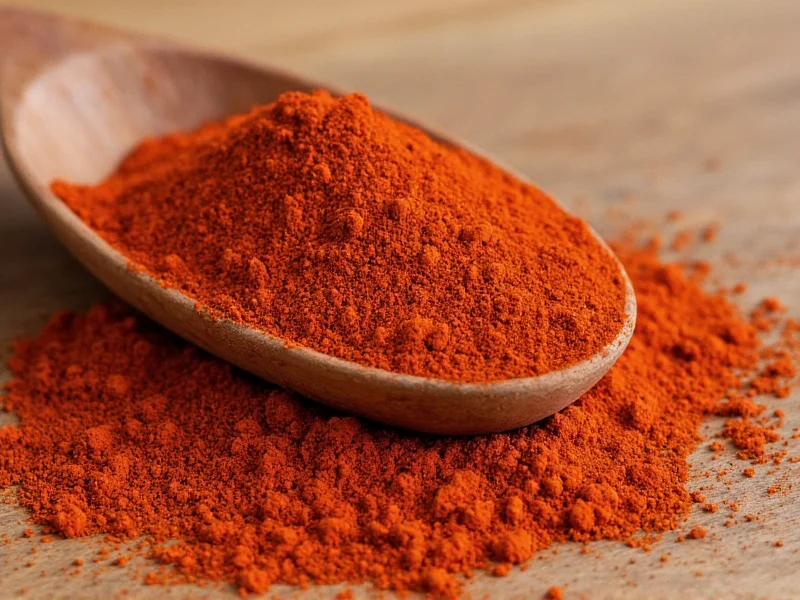For centuries, adjika has been the heartbeat of Caucasian cuisine, particularly in Georgia and Abkhazia where it's considered a staple condiment. Unlike many commercially produced versions that add vinegar or oil for preservation, traditional adjika relies solely on fresh ingredients ground together to create a paste that captures the essence of the region's agricultural bounty. The name "adjika" derives from the Abkhaz word "џьыџа" (dhydža), meaning "to salt" or "seasoning," reflecting its fundamental role in enhancing dishes.
Historical Roots and Cultural Significance
Originating in the mountainous regions of the Western Caucasus, adjika has been part of Georgian and Abkhazian culinary traditions for generations. Families traditionally prepare adjika during late summer and autumn when peppers reach peak ripeness. The preparation process often becomes a communal activity, with extended family members gathering to harvest peppers, peel garlic, and grind ingredients using stone mortars. This ritual preserves not just food but cultural heritage, with recipes frequently passed down through generations with careful attention to regional variations.
Core Ingredients and Regional Variations
While recipes vary by household and region, authentic adjika maintains certain fundamental components. The base typically includes:
| Primary Ingredient | Traditional Proportion | Function in Adjika |
|---|---|---|
| Red chili peppers (Sakartvelo variety) | 50-60% | Provides heat and vibrant color |
| Fresh garlic | 20-30% | Creates pungent base flavor |
| Cilantro or dill | 10-15% | Adds herbal freshness |
| Salt | 5-10% | Preserves and enhances flavors |
| Coriander seeds | 2-5% | Contributes earthy notes |
Regional variations create distinct profiles across the Caucasus. In mountainous Svaneti, adjika often includes more garlic and wild herbs. Coastal Abkhazian versions might incorporate walnuts for texture, while eastern Georgian interpretations sometimes feature additional spices like fenugreek. The authentic preparation method avoids cooking the ingredients, preserving their raw, vibrant flavors through careful grinding and mixing.
Flavor Profile and Culinary Applications
Understanding how to use adjika spice in cooking requires appreciation of its complex flavor profile. Traditional adjika offers more than just heat—it delivers a layered experience starting with bright pepper notes, followed by pungent garlic, and finishing with herbal undertones. The heat level varies significantly based on pepper selection, ranging from mildly warm to intensely fiery.
Chefs and home cooks incorporate adjika into various dishes:
- As a marinade for meats, particularly lamb and chicken
- Mixed with yogurt or sour cream for dipping sauces
- Stirred into stews during the final cooking stages
- Spread on bread or mixed with cheese for appetizers
- Added to vegetable dishes for depth of flavor
When working with adjika, remember that a little goes a long way. Start with small amounts and adjust to taste, as the flavors intensify when incorporated into dishes. Unlike many commercial chili pastes, authentic adjika doesn't contain vinegar, so it integrates differently into recipes—providing fresh pepper flavor rather than acidic heat.
Creating Authentic Homemade Adjika
Preparing traditional Georgian adjika spice recipe at home connects you directly to centuries of culinary tradition. The process requires minimal equipment but benefits from patience and attention to ingredient quality.
Basic Traditional Adjika Recipe:
- Select 1 kg of ripe red peppers (mix of hot and sweet varieties)
- Remove stems and seeds (adjust seed quantity for desired heat)
- Peel and roughly chop 200g of fresh garlic
- Wash and dry 100g of fresh cilantro or dill
- Grind ingredients together using a mortar and pestle or food processor
- Mix in 50g of salt and 20g of ground coriander seeds
- Store in airtight containers, pressing down to eliminate air pockets
The difference between adjika and other chili pastes becomes apparent during preparation—no cooking, no added liquids, just pure ingredients combined through mechanical action. Traditional preparation uses stone mortars which create a superior texture compared to blenders, though modern cooks often adapt the method for convenience.
Storage and Shelf Life Considerations
Proper storage determines how long your homemade adjika maintains peak flavor. Traditional methods rely on salt as the primary preservative, with properly prepared adjika lasting 3-6 months refrigerated. Many home cooks freeze portions for longer storage without significant flavor degradation.
When stored correctly, adjika undergoes subtle fermentation that enhances its complexity. Watch for signs of spoilage including mold growth, unpleasant odors, or significant color changes. Authentic adjika should maintain a vibrant red hue without darkening excessively.
Finding Quality Adjika Products
For those unable to make adjika from scratch, understanding where to buy authentic adjika spice helps ensure quality. Specialty Georgian markets, certain international grocery stores, and reputable online retailers offer traditional preparations. When selecting commercial products, check labels for minimal ingredients—peppers, garlic, salt, and herbs—with no added vinegar, oil, or preservatives.
Many commercially available products labeled as "adjika" actually represent adaptations for broader markets. True adjika maintains the raw, fresh character of its ingredients rather than the cooked, preserved quality of many supermarket alternatives. Reading reviews and seeking products from Georgian or Abkhazian producers increases your chances of finding authentic preparations.











 浙公网安备
33010002000092号
浙公网安备
33010002000092号 浙B2-20120091-4
浙B2-20120091-4